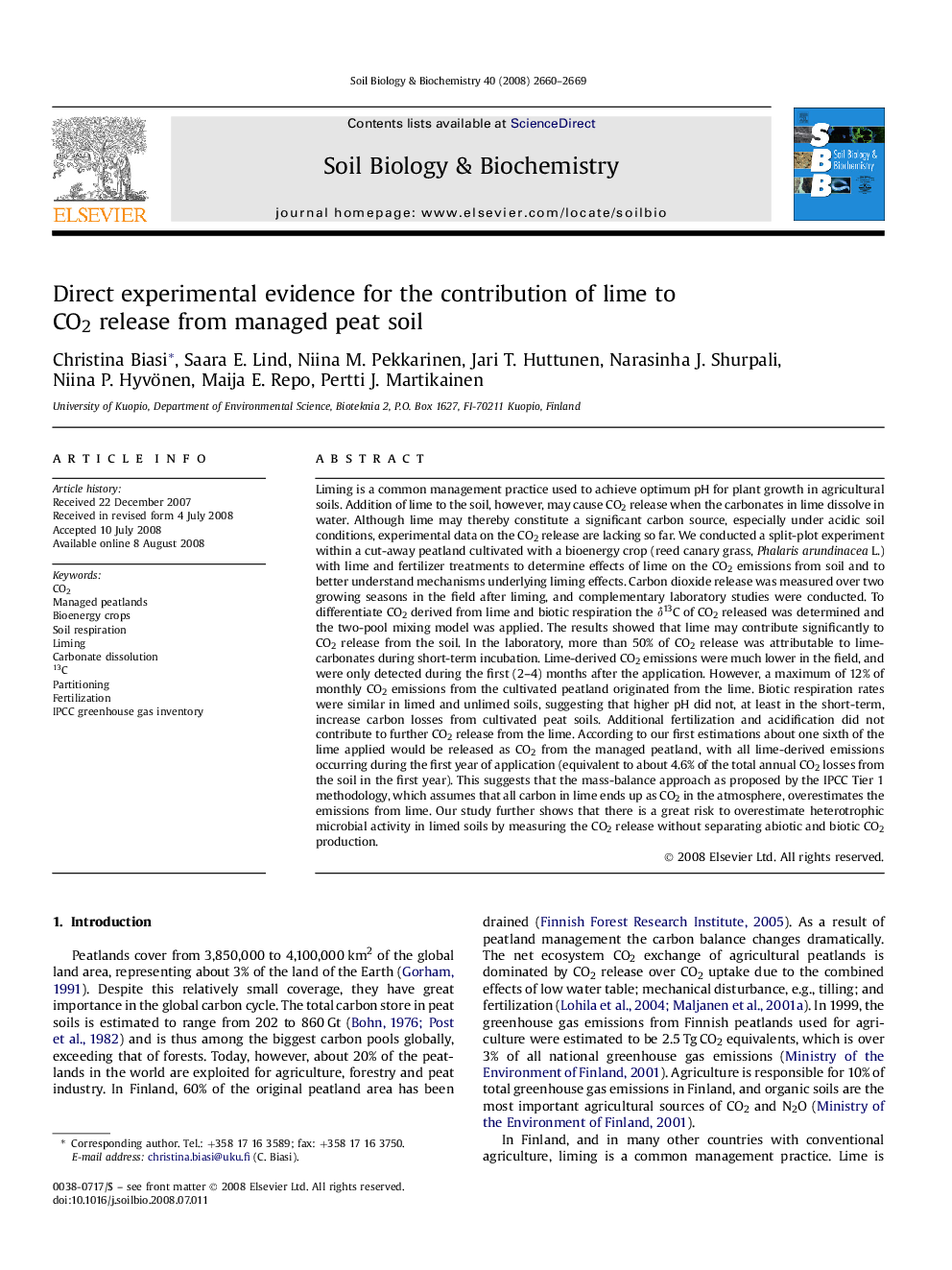| کد مقاله | کد نشریه | سال انتشار | مقاله انگلیسی | نسخه تمام متن |
|---|---|---|---|---|
| 2025669 | 1070005 | 2008 | 10 صفحه PDF | دانلود رایگان |

Liming is a common management practice used to achieve optimum pH for plant growth in agricultural soils. Addition of lime to the soil, however, may cause CO2 release when the carbonates in lime dissolve in water. Although lime may thereby constitute a significant carbon source, especially under acidic soil conditions, experimental data on the CO2 release are lacking so far. We conducted a split-plot experiment within a cut-away peatland cultivated with a bioenergy crop (reed canary grass, Phalaris arundinacea L.) with lime and fertilizer treatments to determine effects of lime on the CO2 emissions from soil and to better understand mechanisms underlying liming effects. Carbon dioxide release was measured over two growing seasons in the field after liming, and complementary laboratory studies were conducted. To differentiate CO2 derived from lime and biotic respiration the δ13C of CO2 released was determined and the two-pool mixing model was applied. The results showed that lime may contribute significantly to CO2 release from the soil. In the laboratory, more than 50% of CO2 release was attributable to lime-carbonates during short-term incubation. Lime-derived CO2 emissions were much lower in the field, and were only detected during the first (2–4) months after the application. However, a maximum of 12% of monthly CO2 emissions from the cultivated peatland originated from the lime. Biotic respiration rates were similar in limed and unlimed soils, suggesting that higher pH did not, at least in the short-term, increase carbon losses from cultivated peat soils. Additional fertilization and acidification did not contribute to further CO2 release from the lime. According to our first estimations about one sixth of the lime applied would be released as CO2 from the managed peatland, with all lime-derived emissions occurring during the first year of application (equivalent to about 4.6% of the total annual CO2 losses from the soil in the first year). This suggests that the mass-balance approach as proposed by the IPCC Tier 1 methodology, which assumes that all carbon in lime ends up as CO2 in the atmosphere, overestimates the emissions from lime. Our study further shows that there is a great risk to overestimate heterotrophic microbial activity in limed soils by measuring the CO2 release without separating abiotic and biotic CO2 production.
Journal: Soil Biology and Biochemistry - Volume 40, Issue 10, October 2008, Pages 2660–2669